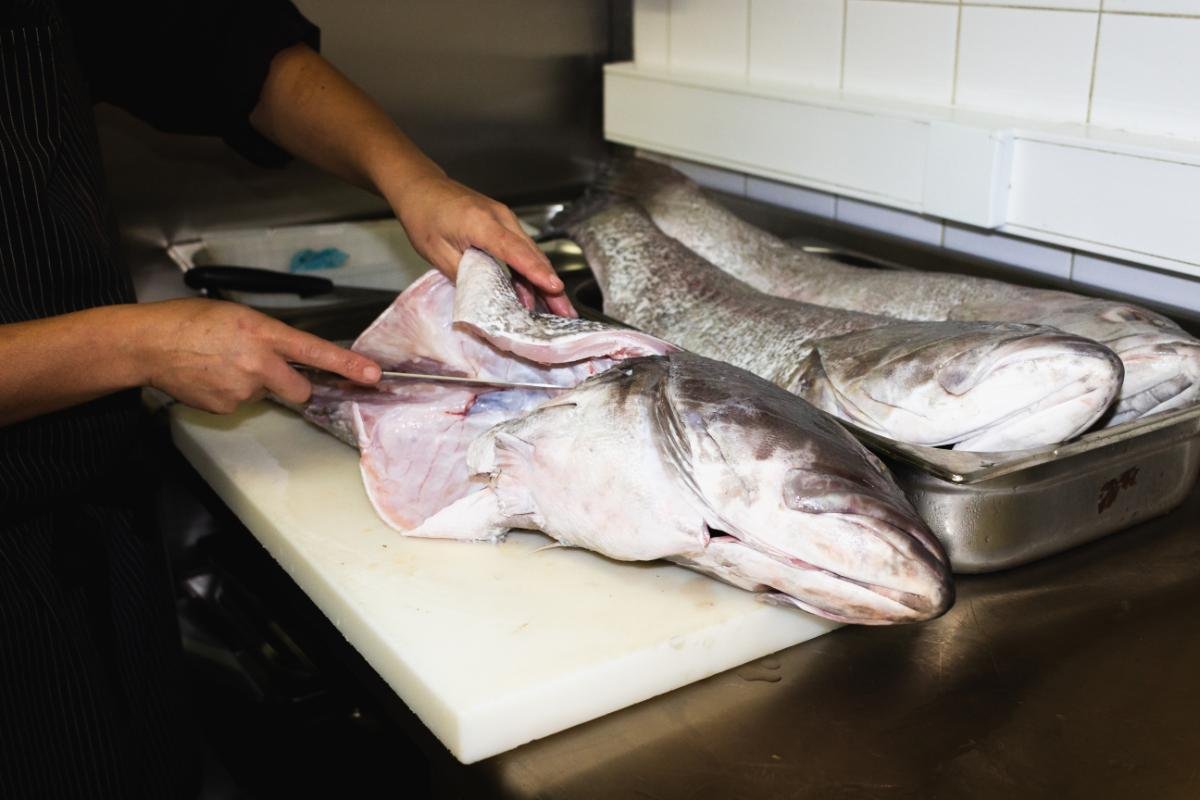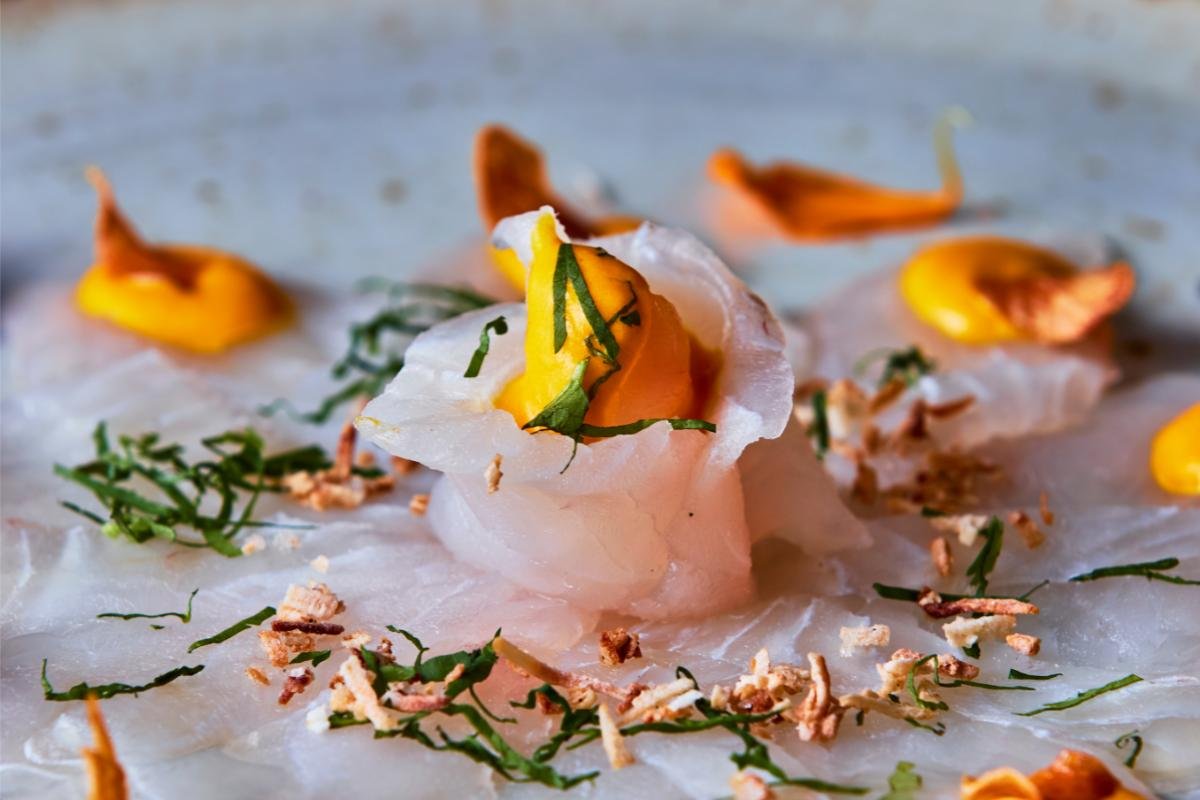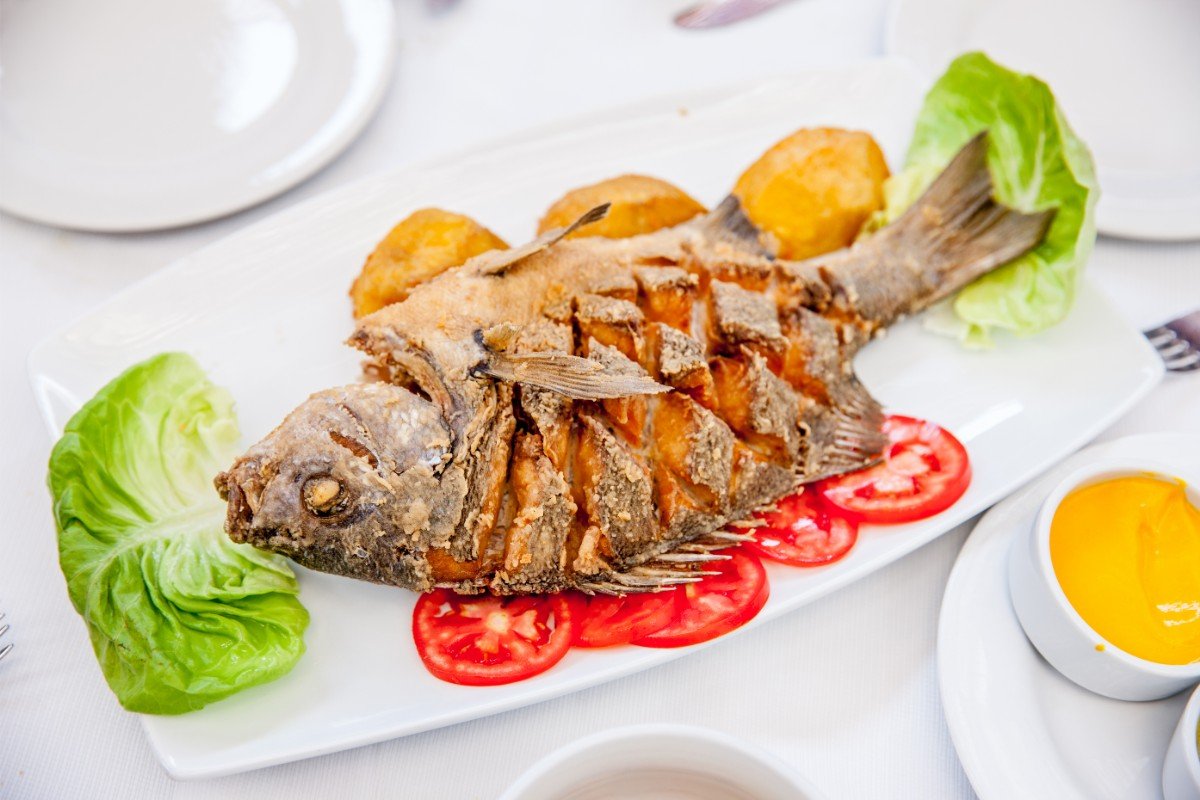Introduction to Corvina Fish in Culinary Arts
Corvina fish, with its sublime texture and mild, sweet flavor, is a hidden gem in the culinary world. Revered by chefs and home cooks alike, this versatile seafood finds its way into a plethora of dishes, celebrated for both its taste and nutritional value. Originating from the temperate and warm waters of coastal regions, corvina, belonging to the Sciaenidae family, is not confined to a single species. This term covers a variety of fish, all sharing some common culinary characteristics that make them a favorite in kitchens around the globe.
The allure of corvina lies in its firm yet flaky flesh, which holds up beautifully to various cooking methods. Whether grilled, baked, seared, or ceviche, corvina serves as a canvas that complements a wide range of flavors, from bright citrus to robust spices. This adaptability makes it a preferred choice for an array of recipes, catering to both refined and simple tastes.
In this guide, we’ll explore everything you need to know about corvina fish—from selecting the freshest fillets to mastering cooking techniques that highlight its natural flavors. Along the way, we’ll share inspiring recipes that will elevate your cooking repertoire, whether you’re hosting a special dinner or looking for nutritious weekday meals.
Join us as we dive into the world of corvina, a seafood delight that promises to enrich your culinary experiences and introduce new dimensions to your home-cooked meals.
Understanding Corvina Fish: Characteristics and Varieties

Corvina fish distinguishes itself in global seafood cuisine through its unique taste, texture, and the diverse varieties available. This section explores these aspects, providing insights into why corvina has become a favored choice among culinary enthusiasts.
Unveiling the Taste and Texture
The first bite of corvina reveals why it’s so cherished in culinary circles. Its flesh, characterized by a subtle sweetness, offers a mild flavor that appeals to a broad audience. The texture of corvina is particularly noteworthy—firm yet delicately flaky, making it an excellent candidate for a variety of cooking methods. This balance between taste and texture allows corvina to shine in dishes without overpowering accompanying ingredients, making it a versatile option for both simple family dinners and elaborate gourmet meals.
Exploring the Varieties
While ‘corvina’ broadly refers to several species within the Sciaenidae family, certain types stand out in the culinary landscape:
- White Corvina (Cynoscion albus): Often found in Pacific waters, this variety is prized for its particularly flaky texture and is a staple in Latin American cuisines, especially in ceviche dishes.
- Black Corvina (Cynoscion nigrescens): Known for its darker skin, the black corvina offers a slightly richer flavor, making it ideal for hearty, flavored-packed recipes.
- Yellow Corvina (Larimichthys polyactis): Smaller in size, this type is celebrated in Asian cuisine, particularly in Korean dishes, where its distinct taste is enhanced through grilling and frying techniques.
Each variety brings something unique to the table, from the subtle differences in flavor to the best culinary methods to enhance their natural qualities. Understanding these nuances can elevate your cooking, allowing you to select the corvina type that best complements your recipe.
Culinary Applications and Inspirations
Corvina’s versatility extends to a multitude of culinary applications. Whether seared to perfection and served atop a bed of fresh greens or marinated and grilled for a smoky finish, corvina adapts to your culinary vision. Its ability to pair well with a wide array of seasonings—from bright lemon and herbs to spicy chilies—opens up a world of flavor possibilities. Chefs and home cooks alike harness this adaptability, crafting dishes that span global cuisines and satisfy diverse palates.
Selecting and Preparing Corvina Fish
Choosing the right corvina and preparing it correctly are crucial steps in creating dishes that truly highlight the fish’s natural flavors and textures. Follow these guidelines to ensure you start your culinary adventure on the right foot.
Choosing the Freshest Corvina
Look for Lively Eyes and Firm Flesh: When selecting corvina, opt for fish with clear, bright eyes and firm, resilient flesh that springs back when gently pressed. These are signs of freshness and indicate that the fish was handled properly from catch to market.
Check for a Pleasant Sea Breeze Scent: Fresh corvina should smell like the ocean—a clean, briny scent. Any strong fishy or ammonia-like odors suggest the fish is past its prime and should be avoided.
Examine the Skin and Scales: The skin should be shiny and moist, with scales that are firmly attached. This indicates that the fish is fresh and has been stored correctly.
Preparing Corvina for Cooking
Cleaning and Filleting: If you’ve purchased a whole corvina, begin by cleaning it thoroughly under cold running water. To fillet the fish, use a sharp knife to make a cut behind the gills, running along the backbone towards the tail. Gently separate the fillet from the rib cage, then repeat on the other side. Remove any remaining bones with tweezers.
Marinating for Flavor: Corvina’s mild flavor makes it an excellent canvas for a variety of marinades. Citrus-based marinades not only add flavor but also help tenderize the fish. For the best results, marinate the fillets for no more than 30 minutes to prevent the acidity from breaking down the flesh too much.
Skin-On or Skin-Off? Cooking corvina with the skin on can add texture and flavor, especially when grilled or pan-seared to crispy perfection. However, if you prefer a more delicate texture, feel free to remove the skin before cooking.
With these tips in mind, you’re well-equipped to select and prepare corvina fish that is fresh, flavorful, and ready for cooking. By starting with high-quality ingredients and applying simple but effective preparation techniques, you set the stage for culinary success.
Culinary Techniques and Flavor Pairings
Mastering the cooking techniques for corvina fish enhances its natural flavors, making each dish a memorable experience. Here, we delve into several methods, each offering a unique way to enjoy corvina, alongside suggested flavor pairings that elevate the fish’s mild taste.
Grilling for a Smoky Flavor
Grilling Corvina: Grilling imbues corvina with a delightful smoky essence, perfect for outdoor gatherings or a flavorful dinner. Lightly oil the grill and the fish to prevent sticking, and cook over medium-high heat. Skin-on fillets are ideal for grilling, as the skin becomes crispy and adds texture.
Flavor Pairings: Complement the smokiness with a fresh citrus salsa or a herbaceous chimichurri. These vibrant accompaniments enhance the grilled fish’s flavor without overwhelming its natural taste.
Baking for Ease and Convenience
Baking Corvina: Baking is a fuss-free method that results in moist, tender fish. Preheat your oven, season the corvina fillets to your liking, and bake until the fish flakes easily with a fork. This method is ideal for both weeknight meals and special occasions.
Flavor Pairings: Pair baked corvina with a light drizzle of olive oil, lemon zest, and a sprinkle of capers. The acidity and brininess highlight the fish’s sweetness, creating a well-balanced dish.
Pan-Searing for a Crisp Exterior
Pan-Searing Corvina: Pan-searing delivers a beautifully crisp exterior while keeping the interior flaky and moist. Heat a skillet with a small amount of oil until hot, then place the fish skin-side down. Cook until the skin crisps up, then flip carefully to finish cooking.
Flavor Pairings: Serve pan-seared corvina with a creamy dill sauce or a tangy mango avocado salsa. These flavors meld wonderfully with the crisp, golden exterior and tender flesh of the fish.
Creating Corvina Ceviche for a Refreshing Twist
Preparing Corvina Ceviche: Ceviche is a refreshing way to enjoy corvina, especially during warmer months. Cube the fish and marinate it in lime juice, allowing the acidity to “cook” the fish. The result is a cool, citrusy dish that’s bursting with flavor.
Flavor Pairings: Enhance your ceviche with finely chopped red onions, cilantro, and diced tomatoes. Serve with crispy tortilla chips for added texture and satisfaction.
Each of these techniques showcases corvina’s adaptability to different cooking styles, making it a standout choice for a variety of dishes. By pairing these methods with complementary flavors, you can create exquisite meals that celebrate the delicate and delicious character of corvina fish.
Corvina Recipes for Every Occasion

From casual lunches to elegant dinners, corvina’s adaptability makes it a perfect choice for any meal. Here, we present a selection of recipes that celebrate the unique qualities of corvina, guiding you through the preparation of each dish with an emphasis on simplicity and flavor.
Grilled Corvina with Citrus Salsa
A Summery Delight: Grilled corvina achieves a sublime smokiness, complemented by a vibrant citrus salsa. Marinate the fish in a mixture of olive oil, garlic, and lime juice before grilling to perfection. Serve with a salsa made from oranges, limes, red onion, and cilantro for a refreshing hit of acidity and sweetness.
Baked Corvina with Mediterranean Vegetables
A Rustic Feast: Baking corvina atop a bed of Mediterranean vegetables such as zucchini, bell peppers, and cherry tomatoes not only infuses the fish with aromatic flavors but also creates a colorful, nutritious one-pan meal. Season with herbs like oregano and thyme to enhance the Mediterranean vibe.
Corvina Ceviche for a Fresh Starter
A Refreshing Appetizer: Transform corvina into a light, citrusy ceviche, perfect as a starter or a light lunch. Cube the fish and marinate in lime and orange juice, then mix with avocado, red onion, and jalapeño for a kick. Serve chilled, garnished with fresh cilantro.
Pan-Seared Corvina with Creamy Dill Sauce
An Elegant Main Course: Pan-sear corvina fillets to achieve a crispy exterior, then drizzle with a creamy dill sauce made from heavy cream, dill, and lemon juice. This dish pairs beautifully with steamed asparagus or green beans, offering a meal that’s both sophisticated and satisfying.
Corvina Fish Tacos with Lime Crema
A Casual, Flavorful Twist: For a fun and informal meal, turn corvina into the star of fish tacos. Season the fish with a blend of cumin, paprika, and lime zest before pan-frying until golden. Serve in soft tortillas with shredded cabbage, avocado, and a zesty lime crema for a fusion of flavors and textures.
Each recipe provides a different way to enjoy corvina, from light and refreshing to rich and hearty. These dishes illustrate the fish’s flexibility, making it a valuable addition to your culinary repertoire.
Nutritional Benefits of Incorporating Corvina into Your Diet
Corvina fish is not just a culinary treat; it’s also packed with essential nutrients that contribute to overall health. This section breaks down the key nutritional advantages of corvina, underlining why it should be a staple in your meal planning.
Rich in Lean Protein
Building and Repairing Muscles: Corvina is an excellent source of high-quality, lean protein, crucial for building and repairing muscles. Incorporating corvina into your meals can help meet your daily protein needs without the added saturated fats found in red meats, making it a healthier alternative for maintaining muscle health.
Low in Fat and Calories
Supporting Weight Management: With its low-fat content and minimal calories, corvina is an ideal choice for those managing their weight or seeking a lighter dietary option. Its satisfying texture and flavor make it a fulfilling component of any meal, helping to curb cravings without compromising on taste.
Packed with Omega-3 Fatty Acids
Promoting Heart Health: Corvina provides a valuable source of omega-3 fatty acids, known for their role in reducing the risk of heart disease. These essential fats contribute to maintaining healthy cholesterol levels and supporting overall cardiovascular health, making corvina a heart-friendly addition to your diet.
Rich in Vitamins and Minerals
Boosting Immune System and Bone Health: Corvina is also a treasure trove of vitamins and minerals, including Vitamin D, B vitamins, potassium, and selenium. These nutrients are essential for supporting a strong immune system, promoting bone health, and aiding in the proper functioning of the body’s various systems.
By incorporating corvina into your meals, you not only indulge in its exquisite taste but also leverage its nutritional benefits to support a healthy lifestyle. Whether grilled, baked, or prepared as ceviche, corvina offers a delicious way to enrich your diet with essential nutrients.
Conclusion
As we conclude our comprehensive journey through the world of corvina fish, it’s clear that this versatile and nutritious seafood offers much more than just a delightful culinary experience. From its unique characteristics and diverse varieties to the creative culinary techniques and flavorful recipes, corvina stands out as a gem in the culinary world. Emphasizing the importance of selecting and preparing corvina with care enhances its natural flavors, making every dish a memorable one. Moreover, understanding the nutritional benefits of corvina allows us to appreciate not just its taste but also its contribution to a healthy diet.
However, our exploration doesn’t end here. The consideration of sustainability and ethical sourcing practices reminds us of the broader impact of our food choices. By choosing sustainably sourced corvina, we contribute to the health of our oceans and the well-being of marine ecosystems, ensuring that future generations can also enjoy this remarkable fish.
For those eager to embark on their own culinary adventure with corvina, RecipesZap.com offers a treasure trove of inspiring recipes. Whether you’re looking to grill, bake, sear, or prepare a refreshing ceviche, our collection is designed to cater to every taste and occasion, inviting you to explore the versatility of corvina in your kitchen.
Beyond the confines of our website, the Marine Stewardship Council (MSC) provides valuable resources and guidance on sustainable seafood choices, including corvina. By supporting MSC-certified fisheries and products, you’re taking a step towards responsible consumption and contributing to the global effort to preserve our oceanic treasures.
In embracing corvina, we not only enrich our culinary repertoire but also align with a mindful approach to eating that values taste, health, and environmental sustainability. Let’s continue to celebrate and champion the virtues of corvina, exploring new flavors and recipes, while advocating for the responsible stewardship of our planet’s remarkable resources.

